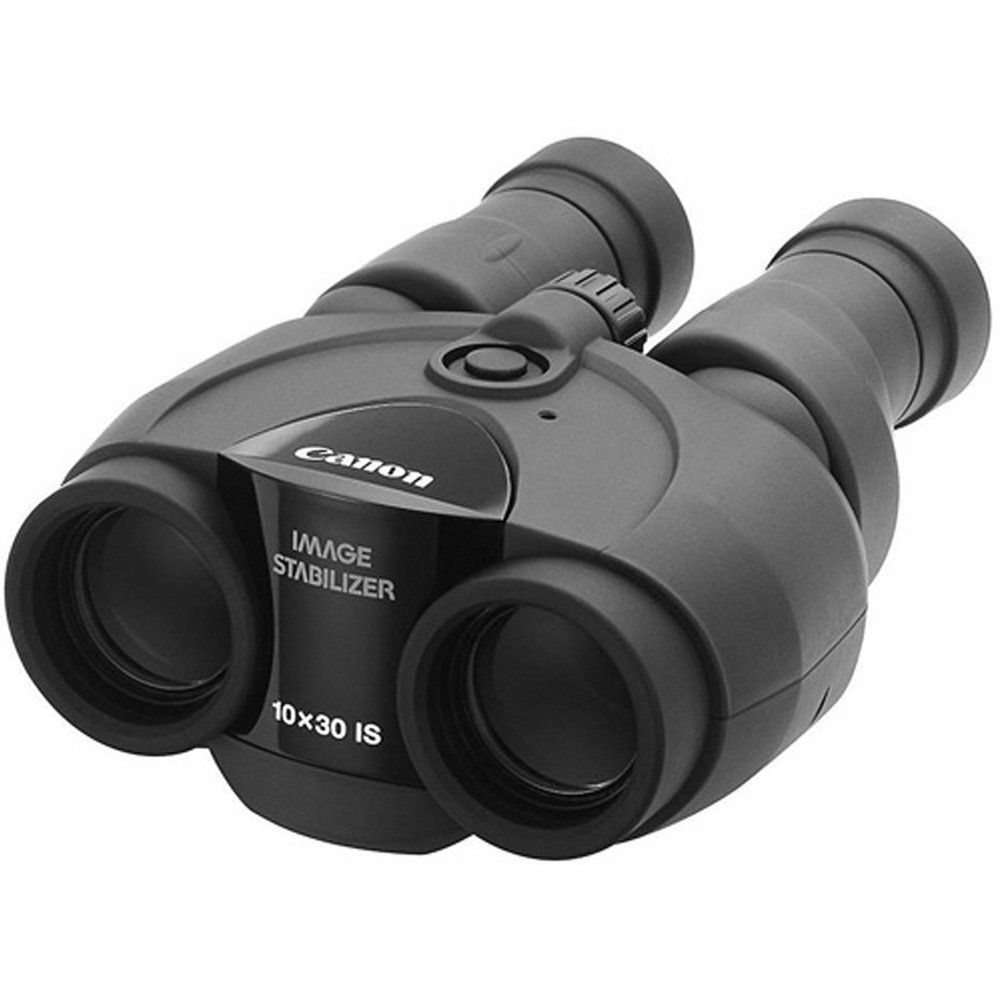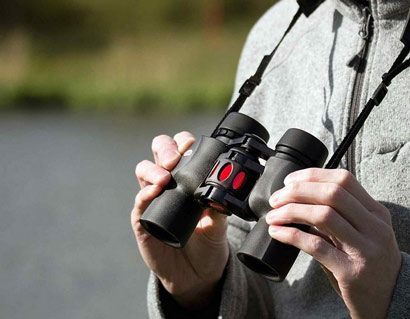 If you are going on your next camping trip, one of the most highly recommended equipment that you should bring is a pair of binoculars. Whether you are planning to go hiking, bird watching, hunting, or stargazing, this equipment can surely help you enjoy these activities. By peeking through its lens, you can easily spot different animals and watch nature in motion, even if you are viewing from a distance.
If you are going on your next camping trip, one of the most highly recommended equipment that you should bring is a pair of binoculars. Whether you are planning to go hiking, bird watching, hunting, or stargazing, this equipment can surely help you enjoy these activities. By peeking through its lens, you can easily spot different animals and watch nature in motion, even if you are viewing from a distance.
If you want to travel light or your backpack is not big enough to fit bigger types of field glasses, don’t worry too much because there are compact versions available on the market. This short article provides a list of the best compact binoculars review that you can use on your next trip. In addition, you will also learn a lot of handy tips on maintaining and cleaning your equipment so that it will last longer.
Contents
Top 3 Portable Scopes
Out of all the numerous compact field glasses out there, there are three models that really stood out. These are the Nikon 8 – 24 x 25 Compact Zoom Scope, the Bushnell Legend Ultra HD Compact Prism Scope, and the Canon 10 x 30 IS Ultra-compact Scope. Here is a quick review of their special features and capabilities.
1. Nikon 8-24×25 Compact Zoom Scope (Black)

The first thing that you will love about the Nikon Compact Zoom is the sleek design. The matte black color gives the equipment a very modern vibe. Not only does it look stunning, but it is also packed with a lot of cool features. The field glasses have multicolored optic lenses that are made from layers of anti-reflective material. Even if the sun is bright, you can easily view the environment in high quality resolution.
In addition, the Nikon compact zoom also boasts of the BaK4 high index prisms that produce crisp and clear images. Its field of view, meanwhile, can reach up to 1,000 yards. The body is both waterproof and fog proof, making it the versatile equipment to use when exploring outdoors. The spotting scopes only weigh 1.2 pounds and measure 4 x 6 x 2 inches. It can be conveniently placed inside your bag, and you won’t even feel that it’s there. The 24x variable magnification allows you to clearly see small objects, even viewing from afar.
If you are going to buy the Nikon Compact Zoom, please be reminded that the zoom function is quite difficult to use. There are instances wherein you need to refocus the lens after zooming in or out. Since it is a compact scope, the viewing area is also a little bit small.
2. Bushnell Legend Ultra HD Compact Folding Roof Prism Binoculars

The Bushnell Folding Roof Prism Scope features an adjustable viewing area to make it easier for almost anyone to use it. The lenses have an impressive 10x magnification that allows you tosee quality images from a distance.
The lenses are anti-reflective and are layered with the RainGuard HD water-repellant coat and Ultra Wide Band Coatings. The spotting scopes effectively transmit natural light and boost it further to improve your viewing experience.
Another thing that you will love about the Bushnell scope is its durable body. Its chassis is made from magnesium that is known for its lightweight but water- and fog proof qualities. It even has soft touch grips to keep you comfortable while watching birds or viewing a sports match.
However, all these amazing features come with an expensive price tag. So if you really want to have amazing lenses and enjoy your outdoor trip, you need to save up first!
3. Canon 10×30 IS Ultra-Compact Scope (Black)

Canon is a company that is known for its powerful DSLRs and digital cameras. However, did you know that they also sell a line of the best compact binoculars? You got that right!
These special viewing lenses feature the Image Stabilization technology found on other Canon cameras. Even if the subject is moving at incredible speeds, you can still see them clearly. This makes it an ideal tool for watching animals hunt their prey and even viewing a sports competition from the upper deck of the stadium. The lens also has a 10x magnification zoom so you can better see your subject from a considerable distance. To keep the lens in mint condition for a long period of time, it is coated with water-resistant rubber. And thanks to the viewing scope’s long-eye relief, your eyes will not be strained while using it.
Unlike other field glasses, this model features a double field flattener to produce crisp visuals and undistorted edges. It measures 2.8 x 5 x 5.9 inches, so it won’t take up a lot of space in your backpack.
When using the Canon Ultra-compact scope, it is important that you take extra care of the lenses because the protective rubber coating can melt when exposed to insect repellant or extremely strong cleaning agents. Make sure that you read the user guide carefully. In addition, this spotting scope is a little bit expensive, so you really need to save up if you want to have it.
Spotting Scope User Guide
Adjusting the interpupillary distance
Interpupillary distance refers to the space between the eyes. In order to align the lens to your eyes, you need to adjust the barrels of the spotting scope. Here’s how you should do it:
1. Raise the spotting scope at eye level and set it to normal viewing position.
2. Hold the barrels firmly.
3. Move the barrels closer. If you cannot see one whole, circular field of vision, try moving the barrels further apart.
Adjusting eye strength
1. Adjust the interpupillary distance of the barrels based on your preference.
2. Usually, your field glasses will have diopter adjustment rings located near the eyecups. These rings will be used for adjusting the eye strength.
3. Close your right eye first and peek through the left scope using your left eye. Adjust the diopter ring until your subject becomes clearer.
4. Do the same with the right eyepiece.
Adjusting the eyecup
1. If you are a non-eyeglass wearer, keep in mind that the eyecups must be fully extended.
2. If you are wearing eyeglasses, make sure that the eyecups are fully retracted.
Adjusting the focus
Once you spot your subject, rotate the ring in the middle of the scope so you can focus on the object in front of you. If you suddenly adjust the diopter ring, make sure that you also tweak the focusing ring to get a better view.
Cleaning and Maintaining Your Field Glasses
The best compact binoculars are not cheap. Make sure that you take care of your equipment so you can get more out of your purchase. Unlike other outdoor equipment, spotting scopes are low maintenance as long as you are diligent in taking care of it.
There are a lot of foreign objects that can harm your field glasses such as grime, moisture, fungi, and dust.
To make sure that these foreign objects won’t accumulate in your precious lenses, you need to store them properly. Ideally, you should store the spotting scope in a dry place with a constantly cool temperature. The lenses should be covered with caps, while the body should be placed in its protective case.
Just like any type of equipment, regular cleaning is also required to maintain the mint condition of the field glasses. ALWAYS read the manufacturer’s guide first before applying any cleaning agent on the chassis and lenses. Keep in mind that strong chemicals can remove the protective coating of the lenses. If there are no specific instructions included in your purchase, one must handle the viewing equipment with care.
When removing dust from the body, it is ideal that you use a camel hair brush. Dust and other small particles usually accumulate around the eye cups, so it’s best if you start cleaning that area. If you do not want to use a brush, then you can opt to use a compact blower. The crevices of the field glasses, meanwhile, can be cleaned using a toothbrush with soft bristles. The body of the viewing equipment can be cleaned frequently, but it is advisable that you do not wipe the lenses every day to prevent them from getting scratched. Only clean the lenses if it becomes blurry.
Never wipe the body and lenses with a rough cloth to maintain their mint condition. The use of toilet paper and napkin is also prohibited.
Frequently Asked Questions
What do the numbers on the spotting scopes mean?
When buying a spotting scope, you probably noticed that its product name often have numbers such as 10×60 or 10×30. The first digit refers to the equipment’s magnifying abilities. So if you see 10x on the box, it means that it can magnify your subject up to 10 times its original size.
The second number, meanwhile, is the objective size, or the diameter in millimeters. When you say objective, these are the big lenses of the spotting scope. If the objective size is 50, it means that it measures 2 inches in diameter (there are 25mm per inch).
Of course, the bigger the objective lenses, the more effective they are at capturing light and making your view clearer. Take note, however, that huge objective lenses also meanthat the field glasses will also be bulkier and more expensive.
What is the meaning of multi-coating?
This just means that the lens is coated with several layers of anti-reflective agents. Multi-coated lenses produce bright and vivid images because they effectively transmit light and prevent it from scattering.
What is the meaning of eye relief?
This refers to the optimal distance between your eyes and the ocular (the area where you view the images in your spotting scope). Low eye relief that measures around 10mm below means that your eyes need to be closer to the ocular. A high eye relief that measures 15mm and above requires more distance.
Is there a difference between multi-coated lenses and fully multi-coated ones?
Most scopes apply layers of anti-reflective agents on the objectives and oculars. However, there are also some models that have multi-coating on the glass-to-air surfaces. Fully multicoated oculars produce extremely high levels of light transmission. However, they are more expensive than field glasses that only have multi-coated lenses.
Do you have to consider my age when buying a spotting scope?
Your eyes lose their capacity to dilate as we grow older. When you reach your 60s, your eyes can only dilate up to 5mm. This means that you need to get more powerful scopes with better dilation if you want to see better from a distance.
The Wrap Up
Binoculars can be really helpful tools when hiking or watching a sports match. Thanks to advancements in technology, you can now view stunning images of wildlife or athletes in high definition. However, not all scopes are made equally, so you need to choose the compact binoculars to get the most out of your purchase.
In addition, you also need to learn how to take care of this equipment. As mentioned earlier, maintaining the pristine look and functionality of your field glasses is an easy task. Hope you enjoy your next outdoor trip with your newly bought scopes!


Reply